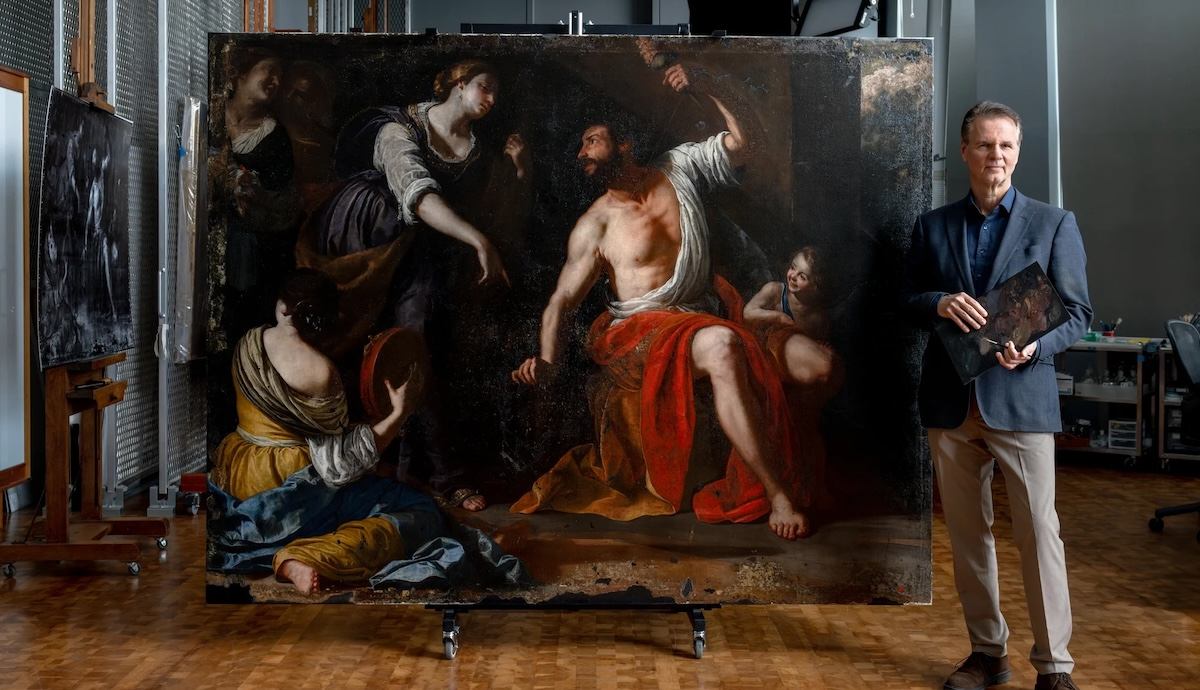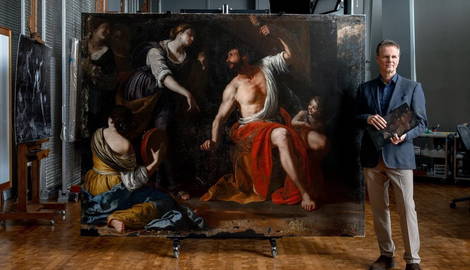
When a series of deadly blasts devastated Beirut in 2020, a previously unknown painting by the most celebrated woman artist of the Italian Baroque era emerged from the wreckage. The painting has since been reattributed to Artemisia Gentileschi and fully restored to its original glory. It is now set to make its first public appearance at the J. Paul Getty Center in Los Angeles next month.
Beirut Blasts Reveal Long-Lost Artemisia Gentileschi Painting

Triggered by the ignition of an ammonium nitrate stockpile, the Beirut explosion caused over 200 deaths and thousands of injuries. Over 300,000 people were left homeless, and the Lebanese capital suffered an estimated $15 billion in property damage. Many cultural heritage sites were destroyed or damaged, including the 160-year-old Sursock Palace, the roof of which partially collapsed. Interestingly, the disaster brought attention to previously unpublished research by Lebanese art historian Gregory Buchakjian, which investigated two paintings in the Sursock Palace collection.
Buchakjian had argued that the two paintings were actually unidentified works by Artemisia Gentileschi. His research reemerged after the blasts grabbed global headlines, and art historians have since reached a consensus that Hercules and Omphale is indeed a long-lost work by the intrepid Italian Baroque artist. According to Davide Gasparotto, the Getty’s senior curator of paintings, Hercules and Omphale was likely painted in Naples in the 1630s.
The 17th-century painting depicts a moment from the myth of Hercules and Omphale, after the Delphic oracle has sentenced the titular hero to become a slave to Omphale, the Queen of Lydia. Gentileschi—who favored portrayals of donne forti, or “strong women” from Biblical and mythological stories—characteristically positions Omphale as the more powerful character in the scene. Hercules, appearing unusually vulnerable, is half-dressed and clutches a spindle, an object traditionally associated with women’s work. The queen towers over him, donning his lion skin and holding his club.
Years-Long Restoration Process Was “Like Assembling a Massive Puzzle”

Conservators at the J. Paul Getty Center in Los Angeles were tasked with restoring the newly attributed Artemisia Gentileschi painting—an arduous process that began in 2022. “In my over 30-year career as a paintings conservator, this is some of the worst damage I have ever witnessed and was one of the most challenging yet rewarding projects I’ve had the pleasure to work on,” said Ulrich Birkmaier, the Getty’s senior conservator of paintings. “It was sort of like assembling a massive puzzle—little by little, the painting came back to life.”
Hercules and Omphale sustained several holes and tears from glass, plaster, and other debris in the Beirut blasts. Birkmaier collaborated with Rome-based conservator Matteo Rossi Doria to tackle the massive conservation project. They began by relining it and reinforcing the canvas with a flexible wooden stretcher. Then, they removed the physical remnants of the explosion and carefully cleaned the surface of the painting, dissolving centuries of varnish to reveal Gentileschi’s original colors.
The conservation team also relied on X-ray analysis to restore the painting to its original state. According to Birkmaier, this process “not only served to visualize some of the changes Artemisia made during the painting process, but it also aided in the visual reconstruction of some details that were lost in the explosion when glass and debris shattered multiple areas of the painting.”
Artemisia Gentileschi Painting Goes on View June 10

Hercules and Omphale, finally reattributed and restored, is now set to star in a new exhibition at the Getty. Artemisia’s Strong Women: Rescuing a Masterpiece opens on June 10 and runs through September 14, 2025. The show centers on Artemisia Gentileschi’s famed portrayals of donne forti and documents the extensive restoration of Hercules and Omphale. After the Getty exhibition, the painting will travel to the Columbus Museum of Art in Ohio. Then, it will be returned to Beirut once the restoration of Sursock Palace is complete.









